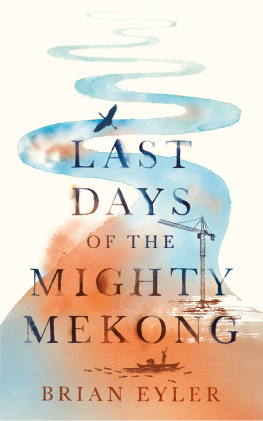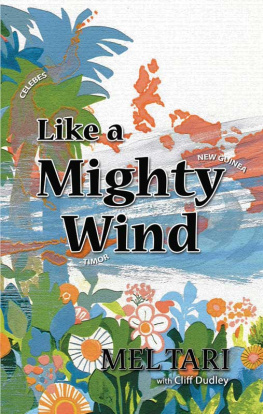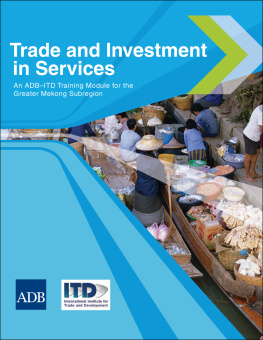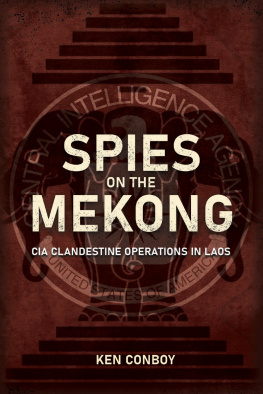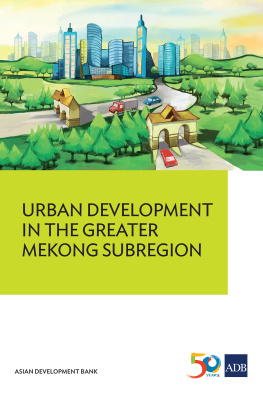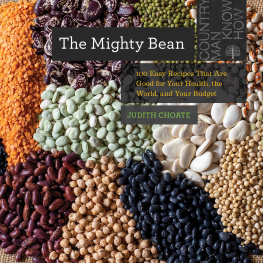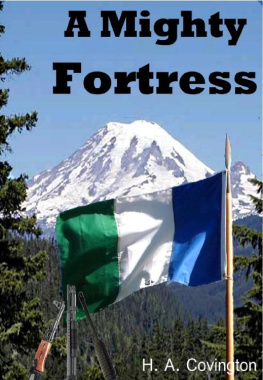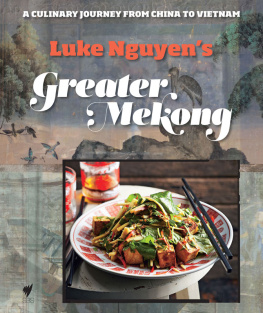Eyler - Last Days of the Mighty Mekong
Here you can read online Eyler - Last Days of the Mighty Mekong full text of the book (entire story) in english for free. Download pdf and epub, get meaning, cover and reviews about this ebook. City: Mekong River;Vietnam, year: 2019;2018, publisher: Book Network Intl Limited trading as NBN International (NBNi);Zed Books Ltd, genre: Home and family. Description of the work, (preface) as well as reviews are available. Best literature library LitArk.com created for fans of good reading and offers a wide selection of genres:
Romance novel
Science fiction
Adventure
Detective
Science
History
Home and family
Prose
Art
Politics
Computer
Non-fiction
Religion
Business
Children
Humor
Choose a favorite category and find really read worthwhile books. Enjoy immersion in the world of imagination, feel the emotions of the characters or learn something new for yourself, make an fascinating discovery.
- Book:Last Days of the Mighty Mekong
- Author:
- Publisher:Book Network Intl Limited trading as NBN International (NBNi);Zed Books Ltd
- Genre:
- Year:2019;2018
- City:Mekong River;Vietnam
- Rating:4 / 5
- Favourites:Add to favourites
- Your mark:
- 80
- 1
- 2
- 3
- 4
- 5
Last Days of the Mighty Mekong: summary, description and annotation
We offer to read an annotation, description, summary or preface (depends on what the author of the book "Last Days of the Mighty Mekong" wrote himself). If you haven't found the necessary information about the book — write in the comments, we will try to find it.
Eyler: author's other books
Who wrote Last Days of the Mighty Mekong? Find out the surname, the name of the author of the book and a list of all author's works by series.
Last Days of the Mighty Mekong — read online for free the complete book (whole text) full work
Below is the text of the book, divided by pages. System saving the place of the last page read, allows you to conveniently read the book "Last Days of the Mighty Mekong" online for free, without having to search again every time where you left off. Put a bookmark, and you can go to the page where you finished reading at any time.
Font size:
Interval:
Bookmark:

PRAISE FOR LAST DAYS OF THE MIGHTY MEKONG
The definitive work on Asias most vital river, this book is more than sound scholarship and wise policy. Brian Eyler shares lyrical and haunting stories, showing how and why the Mighty Mekong must be saved.
Ted Osius, Former US Ambassador to Vietnam (201417)
A wonderfully illuminating and beautifully written portrait of life along the Mekong, and of the forces transforming the region. Eyler offers the type of insight that can only be gained from years of on-the-ground experience.
Elizabeth Economy, Director for Asia Studies, Council on Foreign Relations
A moving requiem for a complex ecosystem upon which millions depend for their livelihoods. The book is an indictment of the failure to treat the Mekong as a single integrated system or to incorporate the local wisdom of the communities who best understand the river.
Judith Shapiro, author of Chinas Environmental Challenges
Brian Eyler tells the story of a river veiled in mystique. He sounds a warning about the ominous challenges it now faces: the encroachment of the state, breakneck hydropower development, the threats of climate change, and an increasingly powerful China bent on harnessing the Mekong to power its continued rise. This is the definitive story of the present and possible future of the Mekong, and an elegy for one of Asias great rivers.
Sebastian Strangio, author of Hun Sens Cambodia

Last Days of the Mighty Mekong was first published in 2019 by Zed Books Ltd, The Foundry, 17 Oval Way, London SE11 5RR, UK
www.zedbooks.net
Copyright Brian Eyler 2019
The right of Brian Eyler to be identified as the author of this work have been asserted by him in accordance with the Copyright, Designs and Patents Act, 1988
Typeset in Baskerville by seagulls.net
Index: Brian Eyler
Cover design: Alice Marwick
All rights reserved. No part of this publication may be reproduced, stored in a retrieval system or transmitted in any form or by any means, electronic, mechanical, photocopying or otherwise, without the prior permission of Zed Books Ltd.
A catalogue record for this book is available from the British Library
ISBN 978-1-78360-720-4 hb
ISBN 978-1-78360-719-8 pb
ISBN 978-1-78360-721-1 pdf
ISBN 978-1-78360-722-8 epub
ISBN 978-1-78360-723-5 mobi
To Vicky
CONTENTS
This book came together over a period of more than 3 years after Zed Books reached out in September 2014 with the suggestion of putting together a book exploring the future of the Mekong region. I am grateful to Paul French for seeking me out and putting his trust in a first-time author. At that time I was living in Kunming, China teaching about China and Southeast Asia to American university students, and writing about happenings in the Mekong region on my website eastbysoutheast.com. I led multiple study tours for these students throughout Yunnan province and into Lower Mekong countries several times a year. These trips to the region showed us the wonders of the Mekong region and built the network of people the reader meets in this book. Later in 2015, I relocated to Washington, D.C. to research Mekong sustainability issues at the Stimson Center, a think tank that promotes pragmatic solutions to traditional nontraditional security issues around the globe. There the tutelage and camaraderie of Dr. Richard Cronin and Courtney Weatherby provided a silver lining to what I previously thought was a doom and gloom future for the Mekong. I am extremely grateful for their contributions to this book both substantive over the years of working together and editorial. The Stimson Mekong team would not have been possible without the longstanding support of Sally Benson and Steve Nichols who also provided integral support for getting this book out of the harbor.
The wisdom and inspiration of several individuals help make this work shine, like Khru Tee who I imagine constantly watching the river from his perch in the Golden Triangle. Ian Baird and Nguyen Huu Thien made significant contributions in correcting contextual issues as well as providing key interviews that set the book on a proper course. I would be nowhere in this venture without the facilitation of Dr. Apisom Intralawan or other people like Brendan Galipeau, Jerry Duckitt, Sorn Pheakdey, Nguyen Thi Thoai Nghi, and Jacqui Chagnon, and the staff at Khiri Travel who all helped introduce me to communities in the Mekong. Im particularly thankful for the support of Virak Ellis-Rouen in Phnom Penh and Nguyen Minh Quang in Can Tho who set up key visits and were available on social media chat lines at all hours to answer even the most trivial questions in record speed. Mekong River Commission CEO Pham Tuan Phan also was always there to point me in the right direction in times of need.
Early conversations with Jeff Opperman, Jannie Armstrong, David Atwill, Tom Fawthrop, Yu Xiaogang, Jake Brunner, Sean Foley, and Francois Guegan provided insight and direction for the books conceptual organization. Of course without my Kunming kemosabe Will Feinberg, a.k.a Xiao Fei, my understanding of Zomia and the Mekongs cultural milieu would still be in its primordial stages. Much of this book is inspired by the writing of James C. Scott, David Biggs, Benedict Anderson, Ian Baird, Thongchai Winichakul, John Dore, and Ed Grumbine. Particularly, I found inspiration in the works of John McPhee who makes the worlds natural systems come alive on paper. Also we are indebted to Milton Osbornes literary contributions to understanding the Mekong system. Without his seminal book The Mekong: Turbulent Past, Troublesome Future this book would have little to rest on.
Kabir Mansingh Heimsath, Patrick Scally, Colin Flahive, and Ryan Haerer all took deep dives into editing and providing comments on early drafts of the book. Numerous translators assisted with interviews in four languages while collecting primary information in the Mekong region. Many of them will remain anonymous at their request, but those that I am happy to name are Ratana Khumporn, Varin Sutavong, Nguyen Minh Quang, Sorn Pheakdey, and Nem Sopheakpanha. To all of you, I am grateful. I would not have reached success with interviews in China without the productive Mandarin language teaching of Anne Wang Pusey and James Pusey.
Others who influenced parts of this book in some shape or form but did not appear in the text are Yereth Jansen, Li Wensheng, Li Lizhen, Liu Jinxin, Zhou Dequn, Alan Potkin, Fanny Potkin, Mak Sithirith, Somphong Sokdy, Mike Dwyer, Kim Geheb, Stew Motta, Remy Kinna, Sean Foley, Chouly Ou, Tek Vannara, Virak Chan, Pou Souvachana, Le Dinh Tinh, Huy Nguyen, James Borton, Sean Weatheralt, Maureen Harris, Pai Deetes, and Zeb Hogan. To those Ive forgotten to mention, please forgive me.
I want to particularly acknowledge the GIS genius of Allison Carr, my former student in Kunming who designed the maps and diagrams for the book. Also, I want to thank the skillful eye and patience of Linda Auld, the books copy-editor, for making this a much smoother read.
Lastly, and most importantly I want to thank my wonderful wife Vicky for her patience and surrendering of two years worth of weekends. And I send a special thank you to my parents who planted the seeds of book writing and traveling the world a long time ago.
The Mekong School, located in the Golden Triangle border town of Chiang Khong, Thailand, sits less than twenty meters from the edge of the famed river. The stilted, two-story teak structure was built by the community preservation group Rak Chiang Khong in 2013. Its meeting room is an open-air space on the schools second floor, and local community leaders often gather there on long, woven grass mats to share perspectives on how to preserve local culture, manage community forests, and protect the valuable resources of the Mekong River. The schools main building is only about twenty meters long, and adjacent to it is a small three-walled shack with an open faade facing the river. Three bunches of unripe, green bananas cut down from banana trees along the edge of the schools plot hang from the shacks supporting beams. A store-bought poster of the recently deceased Thai King Bhumibol Adulyadej hangs on the back wall next to large hand-drawn posters of Ho Chi Minh, Che Guevara, and Nelson Mandela. Below these is a painting of the Naga, the serpentine protector spirit of the Mekong. In the painting, the Nagas tail-end is violently hacked into pieces, but its eyes still possess vibrancy.
Next pageFont size:
Interval:
Bookmark:
Similar books «Last Days of the Mighty Mekong»
Look at similar books to Last Days of the Mighty Mekong. We have selected literature similar in name and meaning in the hope of providing readers with more options to find new, interesting, not yet read works.
Discussion, reviews of the book Last Days of the Mighty Mekong and just readers' own opinions. Leave your comments, write what you think about the work, its meaning or the main characters. Specify what exactly you liked and what you didn't like, and why you think so.

